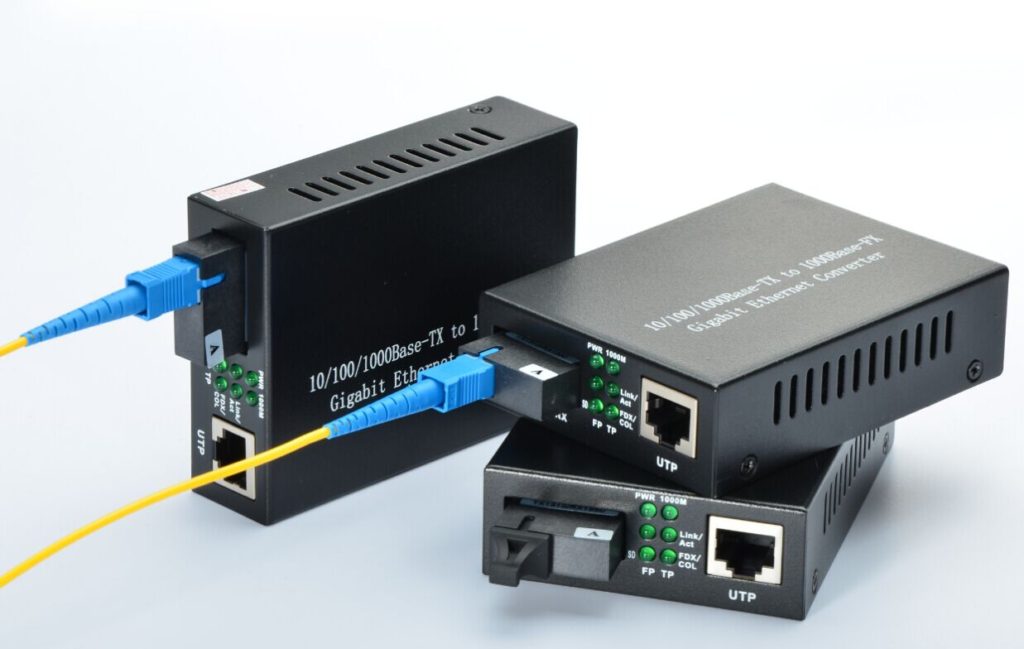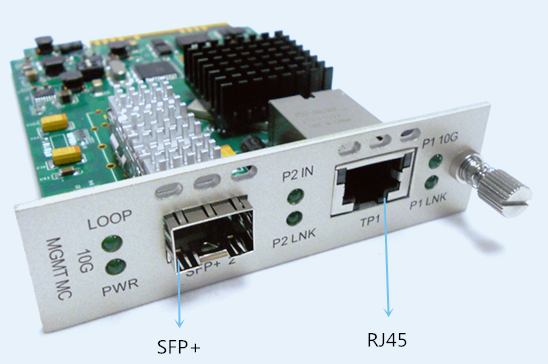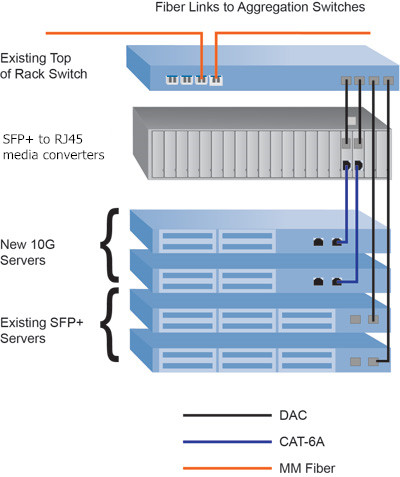If you want to realize the farther distance connectivity than the actual length the copper cabling you already have can offer, what should you do? Much worse is that no switch is available. Don’t be nervous. The easy solution offered by media converter will be illustrated in this article. Are you poised to have a close understanding of the small device which have blown every people’s minds?
Media Converter
Media converter is a cost-effective and flexible networking device that can connect various fibre optic cable such as multimode, single mode or single strand fibre cable and translates signals between fibre optic cabling and another type of cabling media such as cat6 Ethernet cable. If the distance between two network devices is greater than the copper cabling’s transmission distance, the fibre optic connectivity is required, and can be achieved by a media converter. Fibre connections can greatly extend the reach and reduce electromagnetic interference. Media converters were introduced to the industry in the 1990s, and played an important part of fibre types of cabling system in connection with existing copper-based wiring system. They are also used in metropolitan area network (MAN) access and data transport services to enterprise customers.
There are a wide variety of copper-to-fibre and fibre-to-fibre media converters available that support different network protocols, data rates, cabling and connector types.
One of the key applications for fibre to fibre media converters is to connect between the two network types at the physical network layer. Fibre-to-fibre media converters provide connectivity between dual fibre and single-fibre optic cables. In addition, fibre-to-fibre media converters support conversion from one wavelength to another, including standard wavelengths (1310, 1550) and CWDM wavelengths. It can also extend a MM network across SM fibre with distances up to 140km in a cost-effective way. Fibre-to-fibre media converters are typically protocol independent and available for Ethernet, and TDM applications.
Supporting the IEEE 802.3 standard, Ethernet copper-to-fibre media converters provide connectivity for Ethernet, Fast Ethernet, Gigabit and 10 Gigabit Ethernet devices. Some converters support 10/100 or 10/100/1000 rate switching, enabling the integration of equipment of different data rates and interface types into one seamless network. The copper-to-fibre conversion carried out by a media converter allows two network devices having copper ports to be connected across long distances by means of fibre optic cabling.
For twisted pair ports( RJ-45 ports), they can transfer signal of SFP port into signal of RJ-45 port for transmission. SFP port is mainly connected with upstream equipment while RJ45 port is connected to the downstream device.
Conclusion
In the data centre, fibre media converters pose as an alternative solution for switches. Next time you are in this condition, don’t hurry to throw the copper cable away, just an easy click on FS.COM, then all mess will be eliminated. Choose a suitable media converter and it will be delivered quickly to your address. The media converter provided by FS.COM is very small so won’t occupy too much space and can be deployed in a variety of networks and applications.




 Fiberstore
Fiberstore